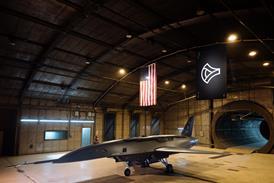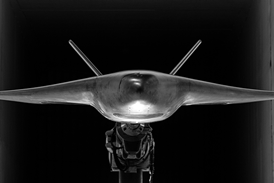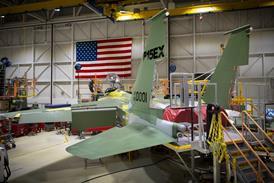Report by Brendan Sobie and Mark Pilling in London and David Field in Washington
Airlines are pushing Airbus and Boeing to launch new narrowbodies that are at least 15% more efficient than the current generation, according to Airline Business research. But the earliest in-service date looks like 2015
Airlines want Airbus and Boeing to accelerate plans to launch new narrowbodies, according to an Airline Business poll of major operators.
However, carriers expect they will have to wait until about 2015 to place into service next-generation narrowbody aircraft. Most airlines polled by Airline Business want them earlier and are eager to begin realising the estimated 15% improvement in efficiency over the current A320/737 generation.
Airline Business received 22 detailed responses to its poll. Sixteen carriers provided specific dates as to when they would want to place into service a new-generation narrowbody (see below). But 13 of these gave dates that are probably unrealistic given the reluctance of the manufacturers to launch new programmes in the near future.
The views of US Airways vice-president financial analysis Dion Flannery are typical of several carriers: "We want as many as we can get as soon as we can get them." US Airways is negotiating to acquire 60 aircraft to replace its 737 and 757 domestic fleets and was interested in becoming a launch customer for a new narrowbody, which if launched soon could be delivered in 2012. But Airbus and Boeing are refusing to offer a new product. "There seems to be a little bit of a cooling towards building one in 2012 and 2013," Flannery says.
Gentle persuasion
US Airways is not alone. Air France has been trying to persuade Airbus and Boeing to launch a new narrowbody for seven years. "Since 2000 we started talking with Airbus and Boeing, trying to convince them to begin the process for a new design for a new generation. We wanted a breakthrough or game changing aircraft," says Air France general manager fleet planning Pierre Vellay.
"We've never stopped asking - not a single month goes by without pressure from our side trying to convince them to do something," he adds. "We are pushing very hard for something new."
Air France operates almost 150 A320 family aircraft and is keen to replace its oldest A320s, which entered service when the type debuted in 1988. "The A320 was an exceptional aeroplane but today it is about the same aeroplane. Fuel burn is about the same, noise is about the same," Vellay says.
Airbus is preparing a mid-life A320 upgrade package featuring large winglets and upgraded engines which will improve fuel burn by up to 5%. An engine upgrade will also be available later this year for the 737 offering a 1% fuel improvement. Both are useful incremental enhancements, but are not the step change carriers are seeking.
Airlines are adamant that totally new narrowbody designs giving double-digit efficiency gains over the current generation are necessary. Twelve of the carriers surveyed said the next generation of narrowbodies should be at least 15% more efficient (see chart). "It's a non-starter at 10%," says Flannery of US Airways. "It's got to be 15%."
According to Mexicana executive vice-president corporate planning and fleet transactions Ricardo Baston: "If the savings commit to a double-digit figure we would like to introduce this new generation aircraft as soon as possible."
Several carriers including British Airways, Finnair and TAP Portugal say without a 15% improvement in efficiency a new narrowbody project is simply not worth pursuing. "Our view is to get the new narrowbody right, they need a significant step forward in improvement," says BA commercial director Robert Boyle. Adds Finnair Aircraft Finance managing director Colin Molloy: "You need 15% to make it worthwhile. It will be difficult to get that."
Engine advances
Molloy says most of the 15% gain will have to come from the engine but the manufacturers are several years away from developing a new powerplant. "They will have to come up with a totally new engine," agrees TAP chief executive Fernando Pinto.
Composites helped drive a 20% efficiency improvement in the 787 compared with the 767. But Pinto says Airbus and Boeing are still studying whether composites will show the same advantages for narrowbodies.
While airlines are keen to realise the anticipated 15% reduction in operating and fuel costs, a major cut in engine emissions is also a key requirement. Aegean Airlines chief operating officer Antonis Simigdalas says narrowbody carbon dioxide emissions must be reduced "to offset new European Commission (EC) rules on emissions trading". Vellay adds that Air France needs a more environmentally friendly narrowbody by 2011, when the EC's proposed Emissions Trading Scheme (ETS) is to take effect, making airlines pay to emit carbon dioxide. "If you consider environmental issues we need something new and we cannot wait," he says.
SAS vice-president fleet development Kurt Kuhne says that from a technological standpoint his carrier can wait until 2015 or 2017 to replace its Boeing MD-80 fleet. But the ETS could accelerate its narrowbody replacement plan. "What is upcoming is the environmental situation - that is the driver," Kuhne says.
In the USA the need for a new narrowbody before 2011 is not driven by the environment but by ageing fleets. Most US carriers have not ordered narrowbodies this decade and prefer to buy a new generation type rather than one of the last A320s or 737s to roll off the production line. "We don't want an interim solution coming back and haunting us later down the road," says Flannery of US Airways.

Delta Air Lines adds: "Delta has two large narrowbody fleets - Boeing MD-88s and 757s - that will likely require replacement beginning early next decade Therefore, Delta would probably put a new generation narrowbody into service as soon as it was available."
American, Northwest and United Airlines are also believed to be pressing manufacturers to quickly launch a new narrowbody but they declined to participate in the survey. American had been hoping to replace its fleet of 300 MD-80s with a new generation narrowbody but chief financial officer Tom Horton told analysts in March that it cannot afford to wait and it will soon acquire additional 737-800s.
Most major narrowbody operators would like to place into service new types by 2015 but will have no choice but to acquire the current generation or wait. Only three of the 22 carriers surveyed said they do not want a new narrowbody before 2015. Not surprisingly these carriers have no incentive to push for a replacement because their A320 or 737 fleets are very young.
Service entry
"We don't think there will be a viable replacement until 2015 at the earliest," says Avitas vice-president of asset valuation Doug Kelly. "Even though manufacturers are already promoting an alternative as early as 2013, we don't think that is going to happen. We think that's something of a ploy to keep customers interested, and let them know that Airbus and Boeing are doing something."
TAP Portugal, which is now looking to replace its five oldest A320s, has also tried to ascertain when a new narrowbody may be available and has come to the same conclusion. "In my opinion it won't happen before 2015," says Pinto of TAP.
Kingfisher Airlines executive-vice president Hitesh Patel agrees: "We're looking at 2015. I'm being realistic. By the time it's certified and operational that's when it will be ready." Kingfisher, like several other major operators, holds options as part of their existing orders to switch to new narrowbodies if and when a new programme is launched.
"One must bear in mind that demand for such aircraft will be the highest in the history," says Mexicana's Baston. "Replacing 6,000-plus aircraft plus incremental demand will be a great challenge for both manufacturers."
But for now both Airbus and Boeing are in no hurry to launch a new narrowbody. "The demand, the backlog [for the current generation] is huge. The market isn't exactly clamouring" says Boeing Commercial Airplanes vice-president marketing Randy Baseler. "The timing [for launch] is mid-decade, give or take a couple of years."
Source: Airline Business
























